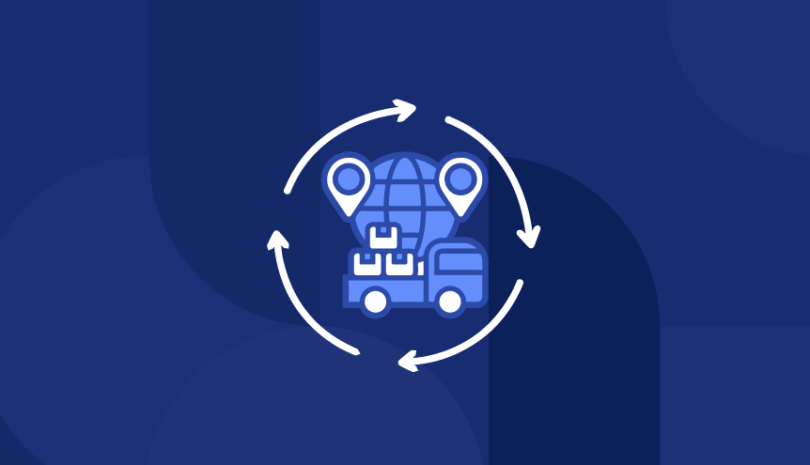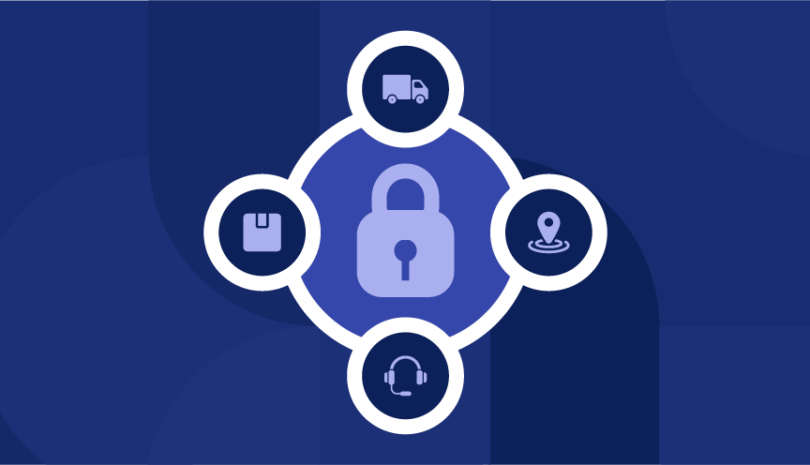Your supply chain is only as strong as its most vulnerable vendor. A single weak link, whether due to poor cybersecurity, financial instability, or regulatory noncompliance, can open the door to costly disruptions, data breaches, or reputational damage.
That’s why identifying high-risk vendors is a critical part of modern vendor risk management. With the increasing reliance on third-party services and digital infrastructure, organizations need clear, repeatable processes to evaluate which vendors pose the most significant risk to their business.
In this guide, we’ll break down what defines a high-risk vendor, the key red flags to watch for, and the steps you can take to identify and manage those risks effectively. Whether you’re building a vendor risk program from scratch or looking to enhance your existing approach, these strategies will help you make smarter, more secure decisions.
What Defines a High-Risk Vendor?
A high-risk vendor is any third-party provider whose failure, compromise, or noncompliance could significantly impact your business. These vendors may handle sensitive data, support essential operations, or operate in regions or sectors with elevated risk.
There are several categories of risk to consider when evaluating vendor relationships. These include cybersecurity risk, operational disruption, financial instability, legal or regulatory violations, and reputational damage.
For example, a cloud provider storing customer data without strong encryption, or a software vendor with a history of security incidents, would be considered high risk. The same applies to suppliers operating in politically unstable countries or subcontractors with poor compliance practices.
Understanding what makes a vendor high risk allows you to prioritize the right assessments and safeguards.
Key Indicators of High-Risk Vendors
Identifying high-risk vendors starts with spotting clear warning signs. Here are the most common red flags to look for:
1. Financial Health Issues. Vendors experiencing financial stress may pose a risk to stability and performance. Signs include declining revenue, layoffs, delayed payments, or low credit ratings.
2. Operational Reliability Problems. Vendors with frequent service outages, slow response times, or delivery failures may lack the infrastructure or processes to meet your expectations.
3. Weak Cybersecurity Posture. Vendors without basic security controls or who fail to meet recognized standards like ISO 27001 or SOC 2 should be evaluated closely. A history of breaches or poor incident response practices is a major red flag.
4. Legal and Compliance Concerns. Vendors that have faced regulatory penalties or legal disputes can expose your business to liability. Noncompliance with data protection laws such as GDPR or HIPAA increases the risk.
5. Geographic or Political Exposure. Vendors based in high-risk regions or countries with weak data protection laws, political unrest, or unreliable infrastructure may face disruptions that affect your operations.
Steps to Identify High-Risk Vendors
Identifying high-risk vendors requires a structured approach that goes beyond basic questionnaires. It involves reviewing vendors across several dimensions, including security, compliance, operations, and financial stability.
Start by conducting a standardized risk assessment. Then evaluate how critical each vendor is to your business, monitor financial health, assess cybersecurity practices, and set a schedule for regular performance reviews.
The following five steps provide a practical framework to help guide the process.
Step 1: Conduct a Comprehensive Vendor Risk Assessment
Begin by using a formal assessment framework to evaluate each vendor’s level of risk. This may include NIST, SIG, or ISO 27001. Review the vendor’s policies, processes, and past performance across categories like cybersecurity, operations, and compliance.
Tailor the scope of the assessment based on how much access the vendor has to sensitive systems or data. The more access or impact a vendor has, the deeper your assessment should go. Keep records of your findings and assign a risk level that aligns with your internal scoring model.
Step 2: Analyze Vendor Criticality
Determine how essential each vendor is to your daily operations, customer experience, and overall business continuity. High-criticality vendors often support core infrastructure, manage regulated data, or provide services that cannot be easily replaced.
Classifying vendors by criticality allows you to allocate risk management resources more effectively. High-impact vendors should be assessed more frequently and require stronger contractual protections and oversight. Understanding criticality helps you focus your time and attention where it matters most.
Step 3: Monitor Financial Health and Stability
A vendor’s financial condition is a strong predictor of future reliability. Use credit checks, financial monitoring tools, and public records to evaluate vendor health over time.
Look for declining profitability, layoffs, legal disputes, or changes in leadership. Frequent mergers or acquisitions may also indicate instability. Monitoring financial data regularly helps you identify signs of distress before they become business-impacting issues. Proactive financial monitoring gives you time to respond or find alternatives when risks start to rise.
Step 4: Evaluate Cybersecurity Practices
Cybersecurity should be one of your top evaluation points. Ask vendors to provide documentation that shows adherence to recognized standards such as SOC 2, ISO 27001, or NIST.
Review their policies for data protection, access controls, encryption, employee training, and incident response. Be sure to ask about recent security audits or breaches. A strong security program is essential for any vendor handling sensitive information or connecting to your systems.
Step 5: Regularly Review Vendor Performance
High-risk vendors can evolve over time, so it’s important to evaluate them on an ongoing basis. Review their service quality, contract compliance, incident response, and communication practices.
Use internal feedback from teams who work with the vendor to gauge satisfaction and reliability. Compare current performance to established KPIs or SLAs. Regular reviews help you detect changes early and maintain a higher level of accountability.
Tools and Resources to Support Vendor Risk Identification
Technology makes it easier to identify high-risk vendors and manage risk more efficiently.
- Vendor Management Systems allow you to centralize vendor information, automate onboarding, and track performance. They also support documentation and renewal workflows.
- Risk Assessment Frameworks such as ISO, SIG, and NIST offer a standardized approach to evaluating risk. They help ensure consistency and thoroughness across your assessments.
- Third-Party Monitoring Platforms like Panorays enable continuous visibility into vendor risk. These tools combine threat intelligence, automated questionnaires, and dynamic risk scoring to identify changes over time.
When combined, these resources create a scalable and proactive approach to third-party risk management.
Challenges in Identifying High-Risk Vendors
Even with the right tools, identifying high-risk vendors is not always easy. Many organizations struggle with limited visibility into vendor operations, especially when relying on outdated or incomplete information.
It can also be difficult to verify that a vendor’s reported practices align with what they actually do in practice. Without ongoing monitoring, risks can go unnoticed for months.
Cost is another barrier. Evaluating every vendor in depth requires time, staff, and budget. Organizations often need to balance thorough assessments with the need to move quickly.
Addressing these challenges requires automation, clear risk criteria, and prioritization of the most critical vendor relationships.
Best Practices for Ongoing Vendor Risk Management
Vendor risk management is not a one-time initiative. It’s an ongoing discipline that requires consistent attention, especially as your vendor landscape, regulatory requirements, and threat environment continue to evolve.
Begin by establishing clear, standardized criteria for evaluating vendors across key categories like cybersecurity, compliance, operational resilience, and financial stability. Implement a scoring model that allows you to rank vendors by both risk level and criticality, so you can prioritize reviews and allocate resources effectively.
Schedule regular assessments and reviews based on each vendor’s role and risk profile. Use automation to streamline data collection and monitoring, but supplement it with qualitative input from the internal teams who work with vendors day-to-day. This helps validate findings and adds critical context.
Consistent communication is also essential. Building strong relationships with your vendors encourages openness, faster issue resolution, and shared accountability for risk management.
By combining structured processes with real-time insights, your organization can stay ahead of potential risks and strengthen the resilience of your entire supply chain.
High-Risk Vendor Solutions
High-risk vendors can introduce serious exposure, from operational disruption to data breaches and regulatory violations. That’s why identifying and managing them is a core pillar of any robust vendor risk program.
The first step is having a repeatable, structured process to evaluate third parties and determine where the greatest risks lie. This means going beyond surface-level questionnaires to assess real-world performance, security posture, and business impact.
That’s where technology becomes essential. Tools like Panorays help organizations streamline risk identification by automating assessments, continuously monitoring vendor exposure, and scoring risk in a way that’s both contextual and actionable. You gain better visibility into your third-party ecosystem and the ability to act before problems escalate.
It’s not enough to identify high-risk vendors, you need to manage them strategically. Whether that means reducing access, improving oversight, or switching providers, the goal is to make smarter, faster decisions that protect your organization.
Take the next step toward a safer, more resilient vendor ecosystem. Get a personalized demo of Panorays today.
High-Risk Vendor FAQs
-
High-risk vendors have the potential to cause significant harm to your organization if something goes wrong. They may have access to sensitive data, support mission-critical services, or operate in high-exposure industries. Without proper oversight, these vendors can introduce security vulnerabilities, create regulatory liabilities, or trigger operational disruptions. Proactively assessing them allows you to uncover issues early, implement risk mitigation strategies, and maintain compliance with industry standards and regulatory requirements.
-
At a minimum, high-risk vendors should be reassessed annually. However, for vendors that are critical to your business or handle large volumes of sensitive data, more frequent evaluations are recommended, such as quarterly or biannually. Additionally, leverage real-time monitoring tools to stay informed of any changes between assessments, including new vulnerabilities, financial instability, or compliance failures. Ongoing visibility is essential for timely risk response.
-
Several established frameworks can guide your approach to vendor risk management. The NIST Cybersecurity Framework offers a flexible model for assessing security posture. ISO 27001 provides a formal standard for information security management systems. The SIG questionnaire (Standardized Information Gathering) is widely used for evaluating third-party risk in a consistent and scalable way. Using these frameworks ensures your assessments are structured, repeatable, and aligned with industry best practices.
-
Start with a thorough onboarding process that includes detailed due diligence and security reviews. Implement clear contractual requirements around data protection, compliance, and service levels. Use monitoring tools to track ongoing vendor performance, and conduct regular reviews to ensure alignment with expectations. Limit access to sensitive systems based on the principle of least privilege, and develop contingency plans for critical vendors in case of disruption or failure. A layered approach helps reduce exposure and keeps your organization prepared for the unexpected.



